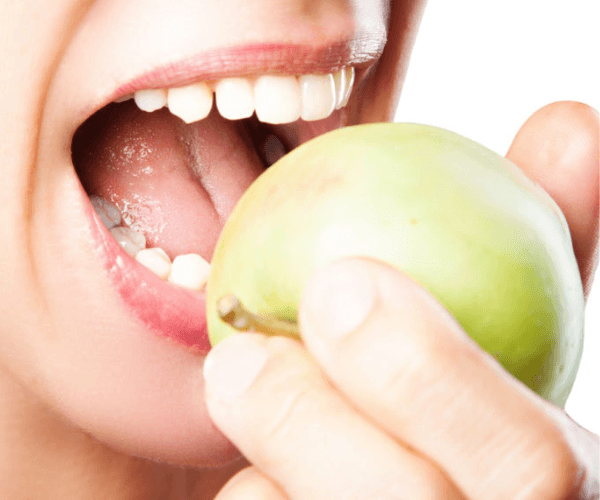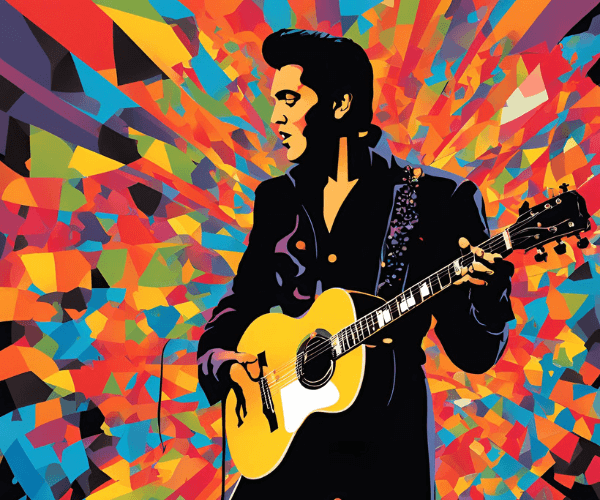If you or a loved one is a “prisoner” of migraine, this information could change your life.
When it comes to chronic migraine, PREVENTION is by far the most sensible choice. The alternative to prevention may be treating the symptoms of migraine pain for a lifetime. Migraines should not be a lifestyle.
A PROPER PREVENTIVE REGIMEN INCLUDES LIFESTYLE CHANGES TO REDUCE STRESS AND AVOID TRIGGERS PLUS NUTRITIONAL SUPPORT TO THE “MIGRAINE BRAIN.”
Few physicians or researchers who are experts on migraines would deny that “STRESS” can be a major factor in the occurrence of migraines.
Making a few minor changes in your lifestyle can make a big difference. Improving sleep habits is important for everyone, and especially those with headaches. What you eat also has a huge impact on your life and can trigger migraines, therefore dietary changes can be extremely beneficial.
AVOID MIGRAINE TRIGGERS
Barometric Pressure/Temperature Changes: When the temperature climbs, so does the likelihood of developing a migraine or other severe headache. In one recent study, researchers found a 7.5% increase in headache risk for every 9 degrees Fahrenheit. Low barometric pressure, which often precedes rain, was linked to a small bump in non-migraine headaches.
Strong smells — even nice ones — trigger migraines in many people. Why this happens is unclear, but the odors may stimulate the nervous system. The most common culprits are paint, dust, perfume, and certain types of flowers.
Aged Meats and Cheeses: One of the most common migraine triggers is aged cheese, including blue cheese, brie, cheddar, feta, mozzarella, parmesan, and Swiss. These foods contain tyramine which can cause a migraine. Red wine and some alcoholic drinks also contain tyramine. Cold cuts and processed meat contain both tyramine and nitrates which can also affect many migraine sufferers.
Caffeine: Though caffeine is found in many headache medications, it is actually a cause of rebound headaches. Though it is difficult for people who are used to consuming large amounts of caffeine to withdraw from it, doing so can significantly reduce migraine frequency and intensity.
Other Triggers: • dairy products* • chocolate • eggs • citrus fruits • meat** • wheat (bread, pasta, etc.) • nuts and peanuts • tomatoes • onions • corn • apples • bananas
* Includes skim or whole cow’s milk, goat’s milk, cheese, yogurt, etc. ** Includes beef, pork, chicken, turkey, fish, etc. Discover your triggers and avoid them if possible.”
HEALTHY DIET: One study indicated that a low fat/ high complex carbohydrate diet may significantly reduce the frequency, severity, and duration of migraine headaches.
Eating Regularly: This is important to prevent low blood sugar. People with migraines who fast periodically for religious reasons might consider taking preventive medications.
Fish Oil. Some studies suggest that omega-3 fatty acids, which are found in fish oil, have anti-inflammatory and nerve protecting actions. These fatty acids can be found in oily fish, such as salmon, mackerel, or sardines. They can also be obtained in supplements of specific omega-3 compounds (DHA-EPA.)

Consider adding fish to your diet
Aerobic Exercise – Exercise relieves stress to put it simply, more specifically, exercise leads to the release of certain neurotransmitters in the brain that alleviate pain, both physical and mental, called endorphins. Endorphin is the brain’s painkiller, and it is 3 times more potent than morphine. Low impact, moderate exercise has been shown to help in the prevention of migraines. Walking, hiking, treadmill, or elliptical machines are good choices.
Always start with a gentle stretch, incorporating breathing techniques as taught in Yoga or Pilates. Taking a deep breath through the nose releases a gas produced in the sinus cavity that when inhaled into the lungs, significantly enhances your lung’s capacity to absorb oxygen. This gas is lethal to bacteria and viruses and is also known to increase oxygen absorption in your lungs from 10-25 percent. The result? You enter a relaxed state which is perfectly combined with stretching and will work in your favor in preventing those migraines. Move on to a warm-up to get the blood flowing to every part of your body then proceed into your workout. Remember not to do anything too suddenly or vigorously.
Behavioral Treatments – Many neurologists who specialize in treating migraine patients recommend behavioral techniques that reduce stress and help patients to identify it. Research indicates between 35 – 50% reduction in migraine and tension-type headaches with these techniques. generally include:
* Biofeedback therapy * Cognitive-behavioral therapy * Relaxation techniques
Avoiding Oral Contraceptives – Oral contraceptives (OCs) have been associated with worse headaches in 18 – 50% of women and have also been linked to a higher risk for stroke in women with classic migraines (with auras). This is due to the hormonal modulation that these kinds of drugs cause.
Why your prescription medication works against you – Many migraine sufferers use either prescription medicines like triptans (i.e. Imitrex, Zomig) or over-the-counter medications many of which contain caffeine. When these medications are consistently used many times a week they actually cause significantly more migraines to happen, even though they may help the current migraine at hand.
Many prescription drug users will find the need to take more of the drug in a day or two because they think the migraine they had returned, when in fact it is a new migraine. THIS IS REFERRED TO AS MEDICATION-OVERUSE HEADACHE (MOH) and this problem is rampant, especially in chronic migraine sufferers.
When the medication you turn to for help, turns on you, it’s time to make a change. The cycle of recurring migraines due to overuse of prescriptions medicines and over-the-counter drugs especially ones containing caffeine is a vicious one. It is very important for migraine sufferers to be aware of their MOH problem because it stops them from responding to preventive techniques and medicines and PREVENTING A MIGRAINE IS A MUCH BETTER OPTION THAN TRYING TO TREAT ONE AFTER IT HAS OCCURRED.
HORMONAL MIGRAINES: Hormone imbalances and blood sugar swings are major causes of migraines that can be addressed through prevention. Fluctuating hormones and PMS increase the frequency of migraines in some women. As previously mentioned under the contraceptive pills section, the changes in the hormonal balance that occurs during various stages of the menstrual cycle can have a large impact on the occurrence of migraines. 18-50% of women report that there is a menstrual component to their migraines. Hormone balance is key.
AVOID STRESS OR ALLEVIATE IT WHEN POSSIBLE: STRESS-REDUCING TIPS – TO AVOID MIGRAINES
BREATHE! Breathing exercise can literally help control your migraines to an extent you may never have thought possible.

Practice methodical breathing
The depth and rate of our breathing respectively decrease and increase when we are stressed. This can deplete oxygen flow to the body and the brain. Please do this breathing exercise exactly as it is described at least 3 times a day:
Blow your breath out through your mouth and then seal your lips. Breathe in slowly through your nose for 10 seconds while expanding your chest. Hold it for 30 seconds while trying to think about “nothing”.
At the end of 30 seconds then slowly expel the breath you were holding, through your lips over a 15-second interval. Notice how your entire body relaxes throughout this breathing exercise especially during the exhalation segment.
Repeat this sequence at least 3 times in a row, working yourself up do doing it 5X in a row, three times a day.
Over time, as your body and brain relax and get used to this very effective breathing technique, you may want to increase the time you breathe in through your nose to 15 seconds, the time you hold your breath to 60 seconds and the time you exhale through your mouth to 30 seconds.
There are other various techniques available to reduce tension and stress. Studies have shown the following to be effective in preventing migraine headaches.
Biofeedback
This system teaches people to monitor and control their physical responses, including muscle tension and even blood pressure. Biofeedback was once considered an alternative treatment, but many studies have proven its effectiveness, and it is now a common migraine treatment.
Relaxation Therapy
There are various techniques used to relax the body, including deep breathing, visualization, and progressive muscle relaxation (a technique of tensing and relaxing various muscles in a specific order).
Cognitive Behavioral Therapy (CBT)
CBT is a form of psychological treatment that teaches patients to recognize and cope with sources of stress in their lives.
PROVIDE NUTRITIONAL SUPPORT TO YOUR BRAIN
The migraine brain is different, with dysfunctional brain processes that can lead to migraines when triggered. Many migraine sufferers especially chronic sufferers can benefit from dietary supplements that provide nutritional support.
Magnesium, riboflavin, and the herb feverfew, vitamin D, and melatonin, have been shown in clinical studies to be nutritionally beneficial to migraine sufferers by helping to maintain healthy cerebrovascular tone and function and to maintain healthy levels of mitochondrial energy (the powerhouses of cells).
OUTSMART YOUR MIGRAINES
There are 4 distinct phases to a migraine: Prodromal (aka Premonitory), Aura, Pain and Postdrome.
It is during the first two phases (prodromal and aura) that you get hints that a migraine is coming, and recognizing these hints (symptoms) may give you the edge you need to fight back with your preferred regimen and either prevent the migraine entirely or decrease the severity and or duration of the pain phase (which is obviously the most debilitating and problematic).
The Prodrome Stage – About 65% of migraine sufferers experience the prodrome phase. In the prodrome stage, sufferers experience emotional or physical symptoms two hours to two days before the pain phase starts.
These symptoms can occur in migraineurs with and without aura:
- Fatigue
- Yawning
- Appetite changes
- Altered mood – depression
- Muscle Stiffness – especially in the neck
- Appetite changes
- Digestive changes – (some sufferers vomit up food they ate quite a while ago)
- Irritability
- Euphoria
- Food cravings
- Constipation
- Diarrhea
- Sensitivity to odors, noise, and light
- Increased urination
Physicians who specialize in migraine treatment find that only 30% of sufferers recognize that they have one or more of the “prodrome” symptoms until they are actually told what symptoms to look for. Once informed then up to 80% of sufferers report having one or more of them.
The Aura Stage – Less than half of migraine sufferers experience the aura stage. During this stage, about one-third of patients see flashing lights, wavy lines, and blank spots in their field of vision (called scotoma) for a few minutes to a few hours before the pain stage begins. Some also have temporary trouble speaking or feel tingling or numbness on one side of the face or feet (called paresthesia). Others may develop a hypersensitivity to touch.
The Pain Stage – The onset of the pain stage can start within minutes or sometimes hours of the commencement of the aura stage. In addition to pain, nausea, vomiting, sensitivity to light (photophobia) sound (phonophobia) and movement may also be experienced.
The Postdrome Stage – During this stage of migraine, even though the pain is gone, some sufferers can feel exhausted, depressed and/or, residual neck pain.
What to try when you notice any of the symptoms in either the “prodrome” or “aura” phases.
If you haven’t realized it already, it is advantageous to experience either or both of these stages because they can both serve as a type of “advanced warning” system that a migraine is imminent.
It is to your advantage to address your migraine as early as possible, so focus on the 13 symptoms listed in the prodromal section. Prescription, OTC therapies and alternative therapies such as ice and relaxation techniques may work better early on.
If you don’t experience any of these aforementioned symptoms, but do experience the symptoms listed in the “aura” section, then that’s when you can start trying the following techniques to prevent your migraine from occurring:
TECHNIQUES TO TRY: None of these techniques work for everybody – you’ll need to experiment to see which of them help you the most.
- H2O – Drink plenty of room temperature water to make sure you are well hydrated.
- Breathe see above.
- Massage – Perhaps have someone massage you (if massage relaxes you.)
- Warm bath – (not hot or cold) Consider soaking in epson/magnesium salts.
- Essential oils – Try applying essential oils to your temples, forehead, and back of neck. An organic roll-on for head comfort containing peppermint, spearmint, lavender, and rosemary in a jojoba oil base can be calming and relaxing.
- Get off the computer – The blue light and flickering or flashing lights of a computer screen is a trigger for some migraine sufferers.
- Walk – If it’s not too hot or cold, get out and take a walk at a moderate pace for 10 minutes.
- Ice Therapy – Try a cool gel cap or other form of ice therapy.
Please remember that none of the above suggestions works for everyone, all of the time. You will have to experiment to see if one or more of these techniques works for you.


